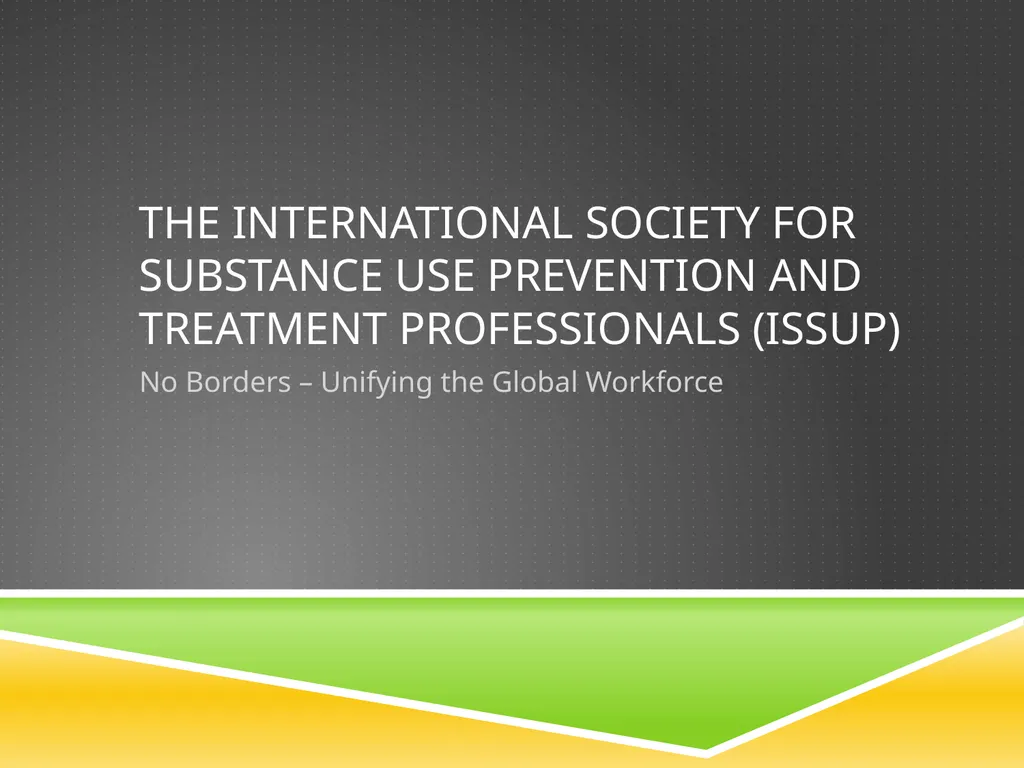The International society for substance use
Author : karlyn-bohler | Published Date : 2025-11-07
Description: The International society for substance use prevention and treatment professionals ISSUP No Borders Unifying the Global Workforce The Impact of drug use No Borders Q What do all of these threats share in common A They do not respect
Presentation Embed Code
Download Presentation
Download
Presentation The PPT/PDF document
"The International society for substance use" is the property of its rightful owner.
Permission is granted to download and print the materials on this website for personal, non-commercial use only,
and to display it on your personal computer provided you do not modify the materials and that you retain all
copyright notices contained in the materials. By downloading content from our website, you accept the terms of
this agreement.
Transcript:The International society for substance use:
The International society for substance use prevention and treatment professionals (ISSUP) No Borders – Unifying the Global Workforce The Impact of drug use… No Borders Q. What do all of these threats share in common? A. They do not respect borders, sovereignty, and affect all nations. No Borders Transnational threats require transnational solutions. Today we launch the International Society of Substance Use Prevention and Treatment Professionals (ISSUP) to harness the global expertise in the fields of prevention and treatment, promote evidence-based research, and improve service delivery. The good news 70 years of scientific research in the field, with significant advances since 1990s. Innovations in behavioral and medical research Drug addiction is a chronic and relapsing disease (e.g. like diabetes, heart disease, hypertension) and its success rate is on par with these other conditions. U.S. Government (NIDA) conducts 85% of the world’s research in the field of substance abuse treatment and prevention, spending billions of U.S. dollars over the past decades. The good news Science demonstrates that drug treatment and drug prevention work and have an impact beyond only drug use. Some results of INL outcome evaluations Afghanistan Evaluation Results: 31% decrease in opium overall 45% decrease for women (past 30-day use) 40% reduction in serious crime 48% reduction in non-serious crime 73% reduction in self-reported arrests (past month) 64% decrease in suicide attempts among women El Salvador Evaluation Results 70% reduction in drug use by gang members and non-gang members (gang members had higher use before treatment) 83% reduction in past-month felonies 75% reduction in arrests and incarcerations by gang members 66% reduction in arrests and incarcerations by non-gang members The BAD news The scientific research is not being translated to the field. Addiction remains misunderstood by many and non-evidence-based practices continue to be used in some treatment programs. Non-evidence-based practices Only detox, no psychosocial treatment Religious education and work in isolation, no therapeutic interventions Cold showers, physical restraints, beatings, starvation, and other techniques As a result of these practices, treatment fails; then clients, families, and communities lose hope for recovery and confidence in treatment. ISSUP: GOALS, MiSSION, and VISION ISSUP is created with the purposes of: Better translating research into practice Recognizing substance use prevention and substance use treatment as independent and multidisciplinary fields of study and practice, requiring specialized academic and practical training. To serve as a professional association supported and guided by international organizations, donor partners, and













